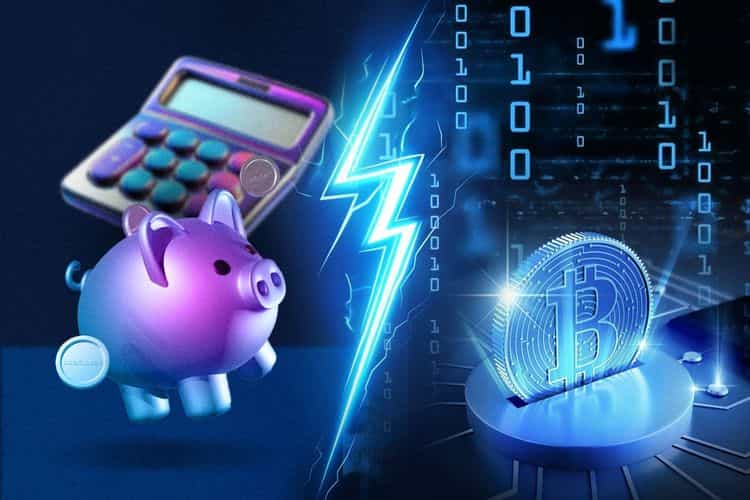How crypto swaps are changing the trading landscape


Cryptocurrency trading is evolving at lightning speed, and one of the most exciting innovations shaking things up right now is crypto swaps. These swaps enable users to trade various cryptocurrencies without relying on traditional exchanges, creating a more decentralized and efficient trading environment. In this article, we’ll explore the different types of crypto swaps, their benefits and risks, and how they’re influencing the future of Decentralized Finance (DeFi). By understanding these swaps, traders can unlock new opportunities and navigate the complex world of crypto trading with greater confidence.
Types of Crypto Swaps and Their Use Cases
Crypto swaps are not a one-size-fits-all solution. There are several types, each with its own set of use cases and benefits for different kinds of traders and investors.
On-chain vs. Off-chain Swaps: What Traders Need to Know
On-chain swaps happen directly on the blockchain by calling a DEX’s smart contract, a self-executing program that temporarily escrows your tokens, checks price and slippage, and then settles the trade. You keep self-custody and get decentralization, security, and transparency, but you pay gas and wait for confirmations (and may face MEV or slippage).
Off-chain swaps happen outside the chain on centralized venues (CEXs/OTC). Instead of a smart contract, you rely on the exchange or broker, which takes custody of your funds until you withdraw. Execution is usually faster and supported by large liquidity pools. While order books or internal systems may be used in the background, the defining factor is that trades are settled under the platform’s control rather than on the blockchain. In return, you accept centralized risks like counterparty failure, withdrawal freezes, KYC requirements, and reduced transparency.
Atomic Swaps and Their Role in Decentralized Trading
Atomic swaps let two people exchange cryptocurrencies directly, no intermediary. The trade is enforced by a smart contract, typically a hash time-locked contract (HTLC), which locks each side’s coins behind the same secret and a deadline. Reveal the secret in time and both parties can claim their new coins; miss the deadline and the contracts automatically refund the originals. It’s a trustless mechanism that ensures fairness without needing a third party.
Cross-Chain Swaps and How They Improve Liquidity
Cross-chain swaps let you exchange tokens across different blockchains, expanding liquidity beyond a single chain or a centralized exchange. They connect chains using mechanisms like atomic swaps (HTLCs), cross-chain AMMs, or bridges that coordinate transactions on both sides. The upside is fewer hops and broader access to assets; the trade-offs can include bridge/relayer trust assumptions plus the latency and fees of both networks.
Smart Contract-based Swaps: Security and Efficiency
Smart contract–based swaps execute trades directly on-chain with self-executing code. The contract temporarily escrows your tokens, checks the agreed terms (e.g., min received, slippage, deadline), and settles atomically, the swap either completes exactly as specified or reverts. With no intermediary holding your funds, you keep self-custody, gain transparency, and cut coordination delays and costs (you still pay gas and should prefer audited contracts).
Benefits of Crypto Swaps for Traders and Investors
Crypto swaps are transforming how traders operate, providing several benefits that have made them an attractive option for both new and seasoned investors.
Increased Liquidity and Reduced Trading Costs
One of the key advantages of crypto swaps is the increased liquidity. Liquidity is how quickly, and in what size, you can buy or sell an asset without moving the price much; in practice, it shows up as deep order books or large AMM pools, tight spreads, and low slippage (on DEXs, this comes from liquidity providers depositing tokens into pools and earning fees).
As more decentralized exchanges and platforms support swaps, traders have access to a wider pool of assets, improving the overall liquidity of the market. Additionally, by cutting out the middleman, swaps can reduce the overall trading costs associated with buying or selling cryptocurrencies. Traders no longer need to pay high fees to centralized exchanges, which often charge a fee for each transaction. As a result, swapping crypto directly on a DEX can significantly reduce costs.
Enhanced Privacy and Security in Decentralized Swaps
Since many swaps occur on decentralized platforms, traders can maintain a higher level of privacy. Centralized exchanges often require users to submit sensitive personal information, but decentralized exchanges (DEX) typically do not. Furthermore, because swaps are conducted directly between wallets, the security of the funds is largely in the hands of the traders. For example, using DEXs like Uniswap or SushiSwap allows traders to maintain control over their private keys, reducing the risks associated with hacking.
Faster Transactions and Elimination of Intermediaries
Swapping cryptocurrencies directly with smart contracts or decentralized exchanges can lead to faster transactions. Without the need for intermediaries, such as banks or brokers, swaps can occur almost instantly. This speed is particularly important in the fast-moving world of crypto trading, where market conditions can change in the blink of an eye. For example, swapping tokens on platforms like Uniswap allows traders to execute transactions in seconds, compared to minutes or even hours it might take on a traditional exchange.
How Swaps Enable Arbitrage Opportunities in Crypto Markets
Crypto swaps can also enable arbitrage opportunities for savvy traders. Arbitrage involves exploiting price differences for the same asset across different markets. Since crypto swaps often occur on decentralized platforms with less liquidity than centralized exchanges, traders can use swaps to buy low on one DEX and sell high on another. For instance, a trader could exploit a price difference between two decentralized platforms by swapping tokens on one platform and immediately selling on another for a profit.
Challenges and Risks Associated with Crypto Swaps
While crypto swaps offer numerous benefits, they also come with certain challenges and risks that traders need to be aware of.
Smart Contract Vulnerabilities and Security Risks
Smart-contract risk is the main hazard in crypto swaps. DeFi runs on “code as law,” so a single bug or bad assumption can let an attacker drain funds, even in audited projects. Typical failure modes include reentrancy, price-oracle manipulation (e.g., thin liquidity or flash-loaned prices), math/precision errors, faulty access controls or upgradeable-proxy misconfigurations, and integration bugs when multiple contracts compose.
How to reduce it: favor battle-tested protocols with multiple audits and active bug bounties; look for timelocks/pause controls and transparent admin keys; avoid “infinite” token approvals; set reasonable slippage and deadlines; start with a small test swap; and keep significant funds in a hardware wallet.
Liquidity Issues and Slippage Concerns in Swaps
Slippage is the gap between the price you expect and the price you actually get when the swap executes. It shows up when markets move while your transaction is pending or when your own trade pushes the price (price impact). On DEXs with AMMs, shallow pools amplify this: a big order against a small pool shifts the pool ratio, so you receive fewer tokens. Volatility, network delays, and MEV can widen the gap further.
Why liquidity matters: Deep liquidity (large pools/tight order books) absorbs orders with minimal price movement; thin liquidity magnifies slippage, especially for larger trades.
How to limit it: set a sensible slippage tolerance, split large orders, route via aggregators that tap multiple pools, trade during calmer periods, or use limit/TWAP tools where available.
Quick example: You’re quoted 1.0000 ETH for your USDT, but the pool is thin and price jumps before confirmation, you receive 0.9850 ETH instead. With a 0.5% slippage limit, that trade would have reverted instead of filling poorly.
Regulatory Uncertainties and Compliance Challenges
Regulatory uncertainty is real for DEX-based swaps. Rules vary by country, and there’s no uniform framework, so what’s permitted in one place may be restricted, or require licensing, KYC/AML checks, or reporting, in another. DeFi adds complexity: the protocol may be decentralized, but front-ends, teams, and liquidity providers can still fall under local laws. Cross-border swaps also bump into sanctions and travel-rule obligations.
What this means for traders: Taxes: Many jurisdictions treat each swap as a taxable event (capital gain/loss). Keep cost basis, timestamps, and fees; rewards/airdrop income may be taxed separately.
Compliance: Check local KYC/AML, securities/derivatives rules, and stablecoin or sanctions guidance, especially if using fiat ramps or custodial bridges.
Practical steps: Use a portfolio/tax tracker, save on-chain receipts, and review your jurisdiction’s guidance (or a professional).
How to Perform a Crypto Swap Step-by-Step
Executing a crypto swap might seem complicated at first, but it’s a relatively simple process once you know the steps.
Choosing the Right Swap Platform for Your Needs
The first step is to choose a swap platform that meets your needs. Depending on your preferred cryptocurrencies, you'll want to select a platform that supports the tokens you're looking to swap.
Step-by-Step Guide to Swapping Tokens on a DEX

Understanding Gas Fees and Transaction Confirmation Times
Every blockchain transaction (including swaps) consumes gas, a unit that measures the computational resources required to process it. You pay gas in the native token of the network (e.g., ETH on Ethereum, TRX on Tron, BNB on BNB Chain, SOl on Solana).
How fees are set (EIP-1559):
What you actually pay: total fee = gas used × min(max fee, base fee + priority fee)
Gas used depends on what you do (e.g., token approvals, swap path complexity, L1 vs. L2).
You’re charged even if a transaction reverts/fails (because computation still ran).
Why confirmations vary: When the network is busy, the base fee rises. Adding a higher priority fee can speed inclusion; setting a low max fee may cause your tx to wait or be dropped.
Best Platforms and Tools for Crypto Swaps
DEX platforms like Uniswap, SushiSwap and PancakeSwap offer robust support for crypto swaps. These platforms are user-friendly, highly liquid, and support a wide variety of tokens.
Swap aggregators such as 1inch , Paraswap or Rango Exchange enable users to compare prices across multiple DEXs to get the best rates on their swaps.
Wallets like MetaMask and Trust Wallet are compatible with most DEX platforms. They allow users to securely swap tokens without needing to rely on centralized exchanges.
Future of Crypto Swaps and Their Role in DeFi
As DeFi matures, crypto swaps are becoming foundational infrastructure, enabling fast, secure, and borderless asset exchange without intermediaries. Beyond just trading, they unlock real-world financial use cases like remittances, freelance payouts, and global commerce. By bridging assets across chains, swaps are turning decentralized finance from an abstract concept into a practical tool for everyday economic activity.
Resources
Frequently asked questions
Check out most commonly asked questions, addressed based on community needs. Can't find what you are looking for?
Contact us, our friendly support helps!
What is MEV?
MEV (Maximal Extractable Value) is the extra profit validators can earn by reordering, inserting, or excluding transactions in a block. It often appears in DeFi as front-running, back-running, or sandwich attacks, allowing insiders to profit at the expense of regular users.
What is the difference between on-chain and off-chain swaps?
On-chain swaps are executed directly on the blockchain and offer greater security and transparency. Off-chain swaps occur outside the blockchain and involve third-party intermediaries.
Can I perform a crypto swap without paying gas fees?
Gas fees are a fundamental requirement for transactions on all blockchains, they compensate the network for processing and securing your activity.
How do I avoid slippage when performing a crypto swap?
To minimize slippage, consider trading on platforms with high liquidity or using swap aggregators to find the best rates.




